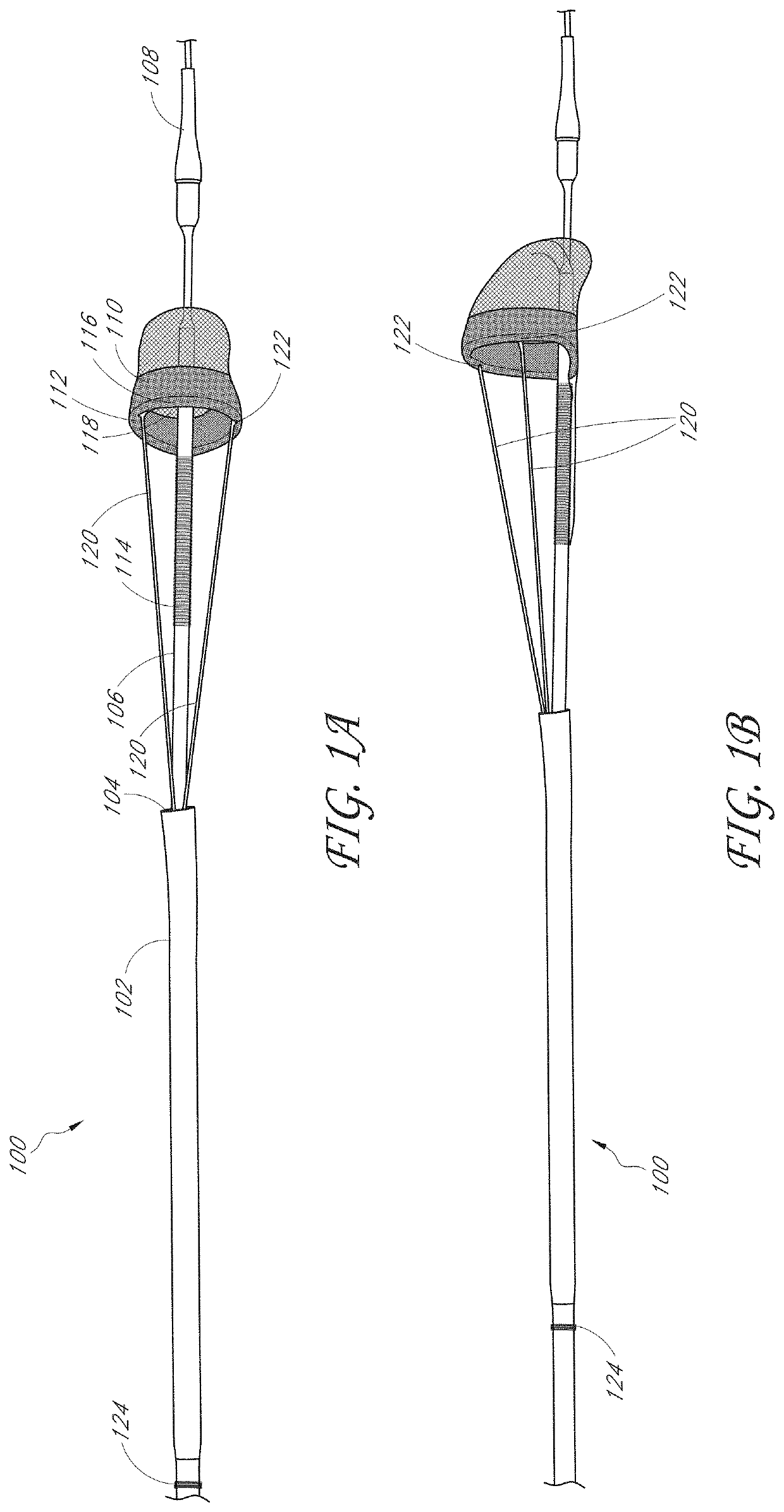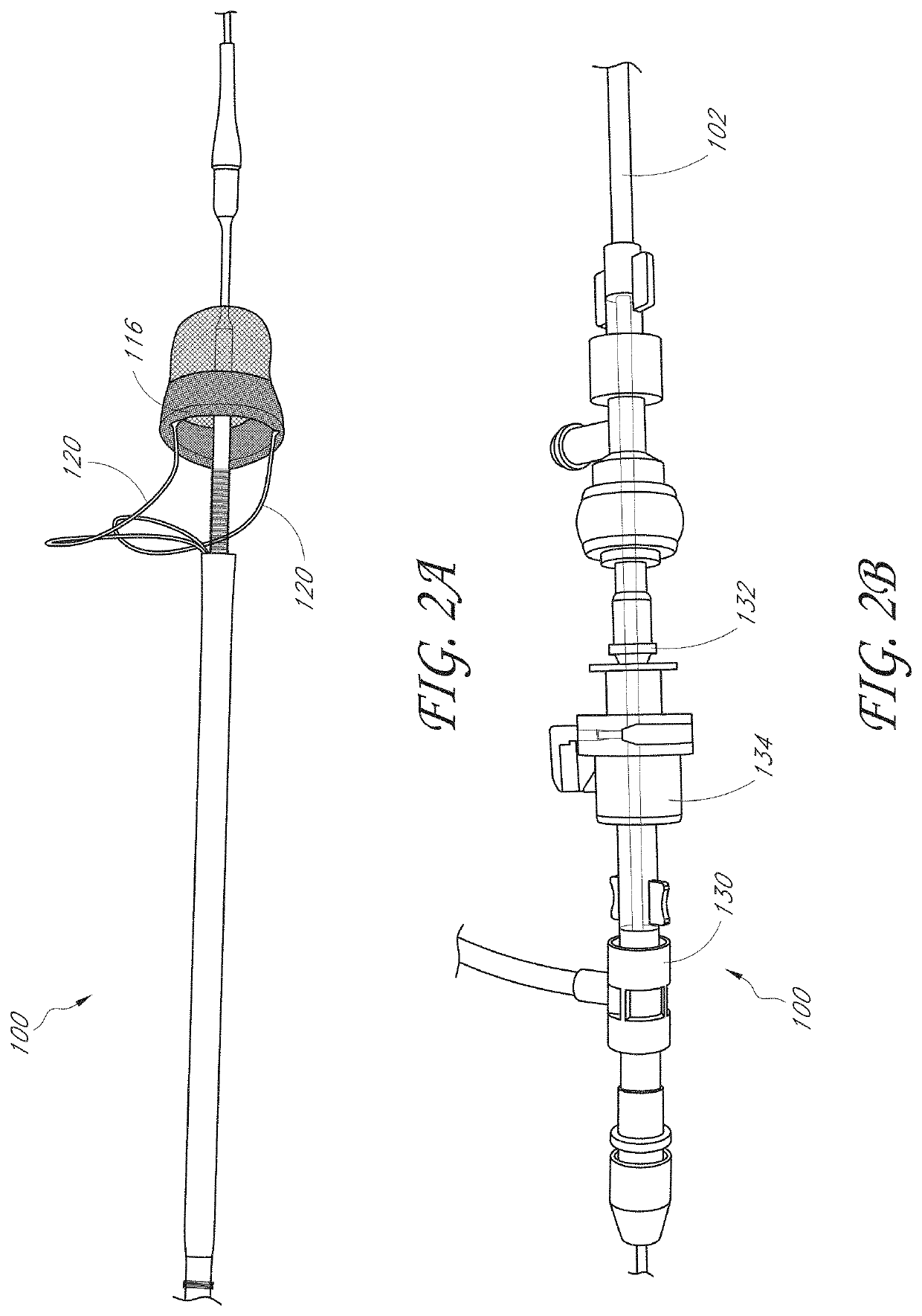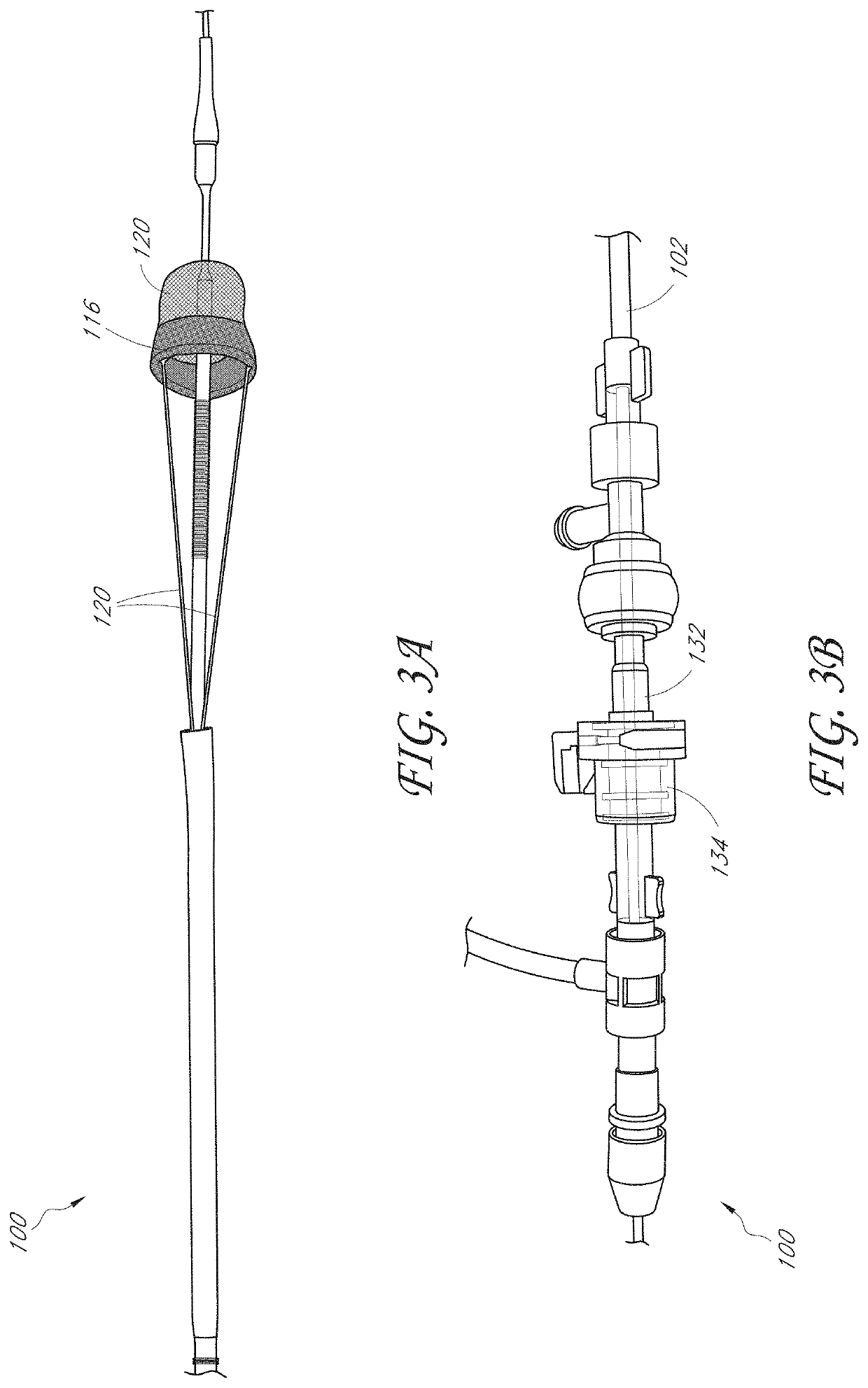Axial lengthening thrombus capture system, tensioning system and expandable funnel catheter
a technology of thrombosis and thrombosis, which is applied in the field of axial lengthening thrombosis capture system, tensioning system and expandable funnel catheter, can solve the problems of significant morbidity and mortality risks, long time duration requirements, and increased healthcare costs
- Summary
- Abstract
- Description
- Claims
- Application Information
AI Technical Summary
Benefits of technology
Problems solved by technology
Method used
Image
Examples
Embodiment Construction
[0055]In some embodiments, disclosed herein are capture systems and methods to retrieve and remove materials including emboli, thrombi, blood clots, stones / calculi, and / or foreign materials from the body of the patient (including devices, such as luminal devices positioned at least partially within the patient and associated with vascular or nonvascular systems). The capture systems and methods can remove materials from the vascular system, including but not limited to devices within or connected to the vascular system, such as stents, filters, and indwelling catheters including but not limited to dialysis catheters. The capture systems and methods can remove materials nonvascular areas to treat, for example, gallstones, kidney stones, common bile duct stones, and the like. The capture systems can be delivered percutaneously or via other techniques in a body of the patient.
[0056]The capture system can include a first member. The first member can comprise a central lumen. The first m...
PUM
 Login to View More
Login to View More Abstract
Description
Claims
Application Information
 Login to View More
Login to View More - R&D
- Intellectual Property
- Life Sciences
- Materials
- Tech Scout
- Unparalleled Data Quality
- Higher Quality Content
- 60% Fewer Hallucinations
Browse by: Latest US Patents, China's latest patents, Technical Efficacy Thesaurus, Application Domain, Technology Topic, Popular Technical Reports.
© 2025 PatSnap. All rights reserved.Legal|Privacy policy|Modern Slavery Act Transparency Statement|Sitemap|About US| Contact US: help@patsnap.com



